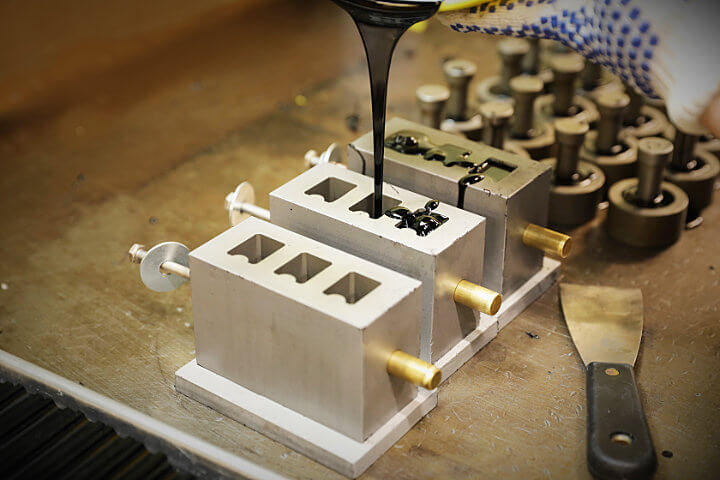Casting thermoset polyurethane is the process of pouring a liquid reactive mixture of urethane components into a mold, and the subsequent reaction that occurs allows the liquid to solidify and cure into a finished product. This type of urethane casting optimizes the cross-linking of the polyurethane molecules, which cannot happen in the relatively short processing time of other molding methods, to provide a superior urethane product.
Versatility of Urethane Casting
A cast thermoset urethane can be used to maximize performance and minimize upfront costs. The casting methods and urethanes used by Pleiger Plastics allow tailoring components for the best overall performance in various products. Being produced in hardnesses from 5A to 80D, the broad range of physical properties and performance characteristics produce parts suited for the most demanding applications.

Low Cost
With minimal setup costs, urethane manufacturing is a highly cost-effective production technique. Coupling low tooling and setup costs with the broad range of materials attributes available makes urethanes ideal for developing new parts and making production levels of existing parts.
While the material may not be considered low-cost, when all product production factors are considered, thermoset polyurethane is often the lowest-cost alternative. Whether your part is as soft as chewing gum or as hard as wood, exposed to oils or water, operating in low or high-temperature extremes, thermoset urethane casting is likely the solution you are looking for.
Thin, Thick, and Variable Cross-Sections
Cast thermoset polyurethanes can be cast in nearly unlimited thickness profiles, from 0.02” to more than 12”. The nature of the reactive process, instead of a cooling process, also allows for varying cross-section thickness.
With the option of larger cross sections, parts produced by open casting are only limited by the size of the mold being made and are not subject to machine tonnage or shot size constraints. Pleiger Plastics has produced parts as long as 22 feet, over 500 pounds, and 8 feet in diameter.
Metal and Non-Metal Bonding Urethane Casting
The urethane casting process allows bonding to steel, stainless steel, aluminum, composites, many types of plastics, and many more materials. Instead of mechanically attaching materials to substrates, pouring liquid directly onto a substrate allows for chemical bonding which is as strong or stronger than the material being cast to the substrate. Our engineering service can determine the best method to adhere polyurethane to your insert, regardless of its composition.
When Using Urethane Casting, You Should Consider:
- Some urethane casting methods may require secondary post machining.
- Tolerances are not as tight as with injection molding, but given the flexible nature of elastomers, they are well within the needs of most applications.
- Because of the lower casting pressures, fine details are difficult to achieve.
- With the urethane reaction happening in the mold, instead of a cooling process common with thermoplastic materials, cycle times are slower.
Let our engineers consult with you on selecting the proper materials for your project, whether it is polyurethane or another material. If polyurethane is the best material for your project, we can offer the most cost-effective method of manufacture and optimize material selection to produce the best part possible.

